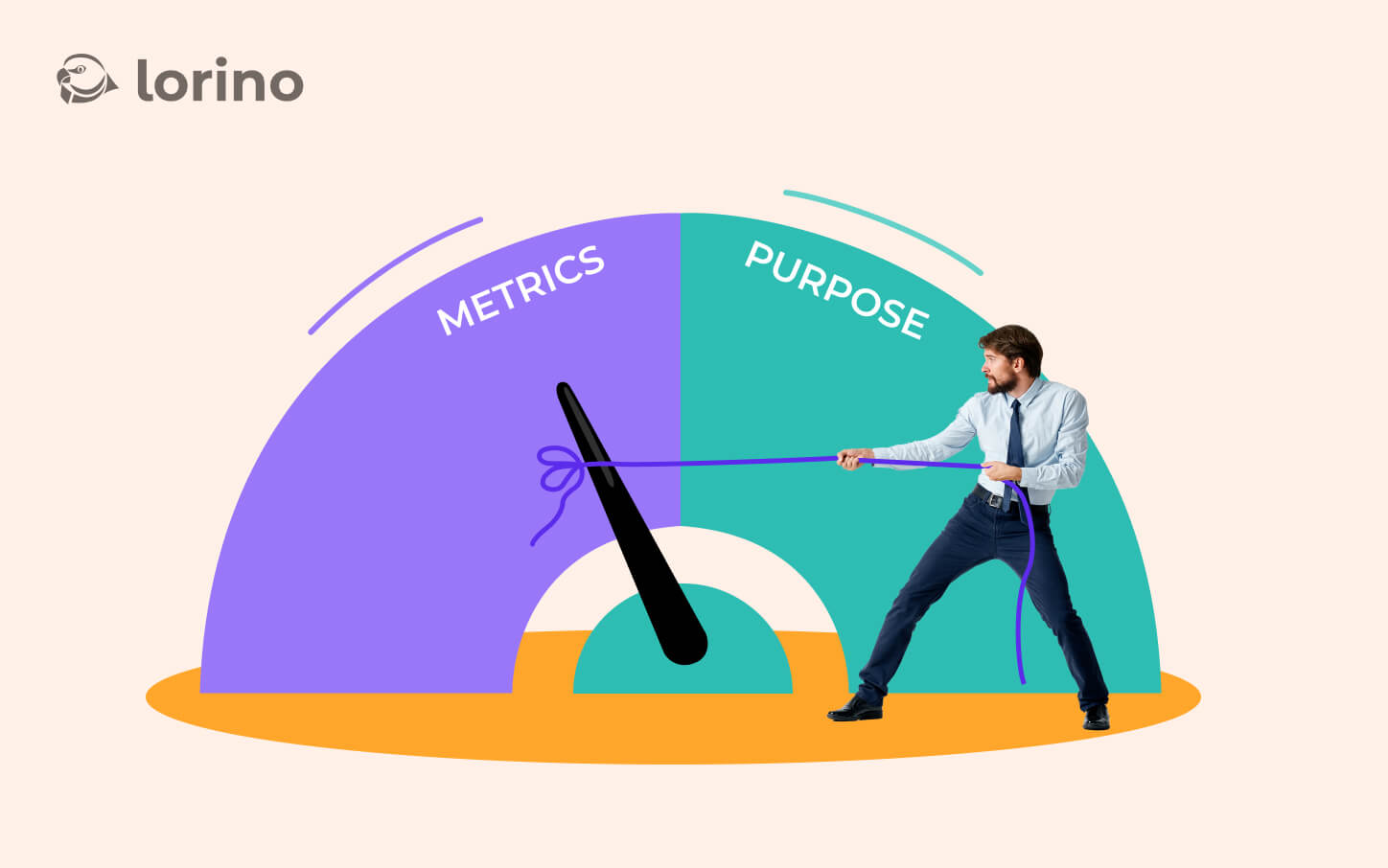It goes without saying that your employee's productivity is crucial for the success of your business, as it is what drives company growth and profitability.
Where it can get tricky though, is when you try to actually measure employee productivity. Sure, you can track all sorts of metrics and data points, but at the end of the day, employee productivity - especially when it comes to knowledge workers - is more than just numbers on a screen.
So before we start talking about how to measure productivity, let's take a moment and try to understand what employee productivity truly is.

What is employee productivity and why is it important to measure it?
Employee productivity (sometimes referred to as workforce productivity) is an assessment of the efficiency of a worker or group of workers. Productivity may be evaluated in terms of the output of an employee in a specific period of time.
But is this really a relevant metric in today's business world, especially when it comes to knowledge workers?
Sure, in production it makes sense to measure how many widgets an employee can put together in an hour. But in a more creative or service-based industry, the output of an employee is not always so cut and dry.
As James Clear put it: “We often assume that productivity means getting more things done each day. Wrong. Productivity is getting important things done consistently. And no matter what you are working on, there are only a few things that are truly important. Being productive is about maintaining a steady, average speed on a few things, not maximum speed on everything.”
Looking at it from this angle, we can see that productivity is not something that can be easily put into numbers. It's a more complex, multi-faceted concept.
And that's why measuring employee productivity can be such a challenge for managers. It's not just about tracking the number of tasks completed or hours worked. You also need to take into account the quality of the work, as well as any other factors that might impact an employee's ability to complete their tasks.
Measuring Productivity in a Meaningful Way
Given that it's not an easy thing to do, it’s no wonder that 22% of British SMEs don’t measure productivity at all. You might be wondering why even bother trying to measure employee productivity this way - your usual metrics give you insight enough, right?
Wrong.
Focusing only on numbers can actually lead to a lot of problems down the road. You might end up with employees afraid to take risks or try new things because they're afraid of not meeting their targets.
Or you might have employees who are working long hours but not necessarily getting anything done, because they feel like they need to hit a certain number in order to be considered productive.
In both of these cases, the quality of work suffers - and that's the last thing you want.
So what are the benefits of measuring employee productivity in a more meaningful way?
The Benefits of Measuring Employee Productivity
It can help you identify areas for improvement - You can get a better understanding of where your employees might need some help. Maybe they're taking on too much work and need some support, or maybe they're not using their time as efficiently as they could be.
Either way, understanding where the issues are is the first step to finding a solution. And that's where measuring employee productivity can really come in handy.
It can help you allocate resources more effectively - If you know which employees are struggling with their workload, you can allocate resources accordingly. Maybe you need to hire more staff to support them, or maybe you need to provide them with some additional training.
It can help you identify high-performing employees - Not only can measuring employee productivity help you identify areas for improvement, but it can also help you find your rockstars. These are the employees who consistently outperform their coworkers and deliver high-quality work.
Knowing who your top performers are can be valuable information for making decisions about things like promotions or raises.
It can help you keep employees accountable - When employees know that their productivity is being tracked, they're more likely to stay focused and on task. This accountability can be a great motivator for employees to stay productive.
How can you measure employee productivity in your business?
The most important thing is to find a system that works for you and your business because as mentioned earlier, just chasing KPIs is not going to give you an accurate measure.
But to keep it simple, let's start with the more basic options and then see how you can get more sophisticated with your tracking.
Measuring through time management
This is probably the most common way that businesses measure employee productivity. And it's not hard to see why. Measuring how much time employees spend on tasks can give you a good idea of how productive they're being.
There are a few different ways you can do this:
-
You can manually track the amount of time employees spend on tasks using a timesheet.
-
You can use project management software to track the amount of time employees spend on tasks. This can be a great option if you have team members working on projects together.
-
You can use employee productivity tracking software. This is a more sophisticated option that can give you a lot more insight into employee productivity.
However, keep in mind that this type of tracking productivity might be relatively fast and easy to do, but it doesn't give you the whole picture.
If you choose this as your preferred method, you might want to augment it with The Eisenhower Matrix, for example, to get a more well-rounded perspective of your employee's productivity.
Measuring through output/goals
This is a more sophisticated way of measuring employee productivity. Instead of tracking the amount of time employees spend on tasks, this method focuses on measuring the actual output or goal.
It does this by setting productivity goals for employees and then tracking their progress towards those goals.
This method can be more effective than measuring through time management because it focuses on results rather than time spent.
It's also a great way to measure employee productivity if you have remote team members because you don't have to worry about time tracking software or manual timesheets.
To get started with this method, you first need to decide what goals you want your employees to achieve. These can be specific to an individual employee or they can be team-wide goals.
The tricky part is making sure that the goals you set are realistic and achievable. If they're too easy, your employees won't be challenged and they won't be productive. But if they're too hard, your employees will get frustrated and might give up.
Measuring through objectives and key results (OKRs)
The idea behind OKRs is that each employee has a set of objectives (things they need to achieve) and key results (how they will measure those achievements).
For example, an employee's objective could be to increase sales by 10% and their key result could be the number of sales they make in a month.
This method of measurement is more accurate than measuring time spent on tasks or output because it takes into account both the quantity and quality of work.
It also gives employees a clear sense of what they need to achieve and how they will be measured.
Measuring through performance reviews
This method has been around for ages and even though it has undergone many changes in the past 25+ years, it is still one of the most used around the world.
The idea is that you regularly (usually once per quarter or once per year) sit down with employees and review their performance against a set of standards.
This method of measurement can be accurate if the standards are well-defined and if the reviews are conducted regularly.
It is a very personal way of measuring productivity, which can be good or bad depending on your perspective. On one side, you get to assess each and every employee individually, giving you a more intimate view of their performance.
On the other hand, this method can be quite time-consuming, and some employees may feel like they're being constantly monitored.
The best way to measure productivity
So what is the best method for measuring productivity? That largely depends on the type of business you're in and what your goals are.
If you're running a remote team, for example, measuring output might be the best option because it's the easiest to track. But if you're looking for a more holistic view of employee productivity, performance reviews might be a better option.
If the majority of your workers are knowledge workers then the best way to measure their productivity is likely going to be different than if you're measuring the productivity of factory workers.
It's also important to keep in mind that no single method of measurement is perfect. Each has its own advantages and disadvantages, so it's important to choose the one that makes the most sense for your business or combine multiple methods to get a more well-rounded view.
Summary
Whatever method you end up choosing, keep in mind that tracking productivity should be about understanding what works and what doesn't so you can make improvements.
It's not about micromanaging employees or catching them out when they're slacking off, but rather about helping them to be the best they can be.
If you can do that, you'll see a real difference in your business.



